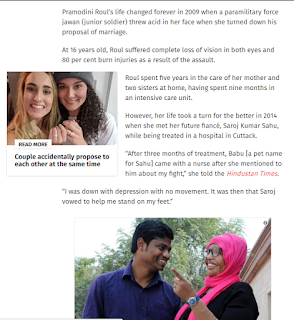Vladimir Propp analysed a whole series of Russian folk tales in the 1920s and decided that the same events kept being repeated in each of the stories, creating a consistent framework. Propp extended the Russian Formalist study of language to his analysis of folk tales. He broke down the tales into the smallest possible units, which he called narratemes, or narrative functions, necessary for the narrative to exist and these are listed below. Each narrateme is an event that drives the narrative forward, possibly taking it in a different direction. Not all of these functions appear in every story, but they always appear in this order.
Propp suggested that every narrative has eight different character types, these character types are:
The villain- fights the hero in some way. The villain will usually wear dark and mysterious colours, and not very attractive. This is to juxtapose between the hero and the villain; to highlight their differences.
The dispatcher- character who makes the villain's evil known and sends the hero off.
The helper- helps the hero in the quest
The princess or prize - the hero deserves her throughout the story but is unable to marry her because of an unfair evil, usually because of the villain.
Her father-gives the task to the hero, identifies the false hero, and marries the hero, often sought for during the narrative. Propp noted that functionally, the princess and the father cannot be clearly distinguished.
The donor- prepares the hero or gives the hero some magical object
The hero or victim/seeker hero- reacts to the donor, weds the princess. This is the most common character type who eliminates the villain.
False hero- takes credit for the hero's actions or tries to marry the princess.
Propp's Narrative Functions
These 31 functions are as follows:
- A member of a family leaves home (the hero is introduced as a unique person within the tribe, whose needs may not be met by remaining)
- An interdiction (a command NOT to do something e.g.'don't go there', 'go to this place'), is addressed to the hero;
- The hero ignores the interdiction
- The villain appears and (either villain tries to find the children/jewels etc; or intended victim encounters the villain);
- The villain gains information about the victim;
- The villain attempts to deceive the victim to take possession of victim or victim's belongings (trickery; villain disguised, tries to win confidence of victim);
- The victim is fooled by the villain, unwittingly helps the enemy;
- Villain causes harm/injury to family/tribe member (by abduction, theft of magical agent, spoiling crops, plunders in other forms, causes a disappearance, expels someone, casts spell on someone, substitutes child etc, commits murder, imprisons/detains someone, threatens forced marriage, provides nightly torments); Alternatively, a member of family lacks something or desires something (magical potion etc);
- Misfortune or lack is made known, (hero is dispatched, hears call for help etc/ alternative is that victimised hero is sent away, freed from imprisonment);
- Seeker agrees to, or decides upon counter-action;
- Hero leaves home;
- Hero is tested, interrogated, attacked etc, preparing the way for his/her receiving magical agent or helper (donor);
- Hero reacts to actions of future donor (withstands/fails the test, frees captive, reconciles disputants, performs service, uses adversary's powers against them);
- Hero acquires use of a magical agent (it's directly transferred, located, purchased, prepared, spontaneously appears, is eaten/drunk, or offered by other characters);
- Hero is transferred, delivered or led to whereabouts of an object of the search;
- Hero and villain join in direct combat;
- Hero is branded (wounded/marked, receives ring or scarf);
- Villain is defeated (killed in combat, defeated in contest, killed while asleep, banished);
- Initial misfortune or lack is resolved (object of search distributed, spell broken, slain person revived, captive freed);
- Hero returns;
- Hero is pursued (pursuer tries to kill, eat, undermine the hero);
- Hero is rescued from pursuit (obstacles delay pursuer, hero hides or is hidden, hero transforms unrecognisably, hero saved from attempt on his/her life);
- Hero unrecognised, arrives home or in another country;
- False hero presents unfounded claims;
- Difficult task proposed to the hero (trial by ordeal, riddles, test of strength/endurance, other tasks);
- Task is resolved;
- Hero is recognised (by mark, brand, or thing given to him/her);
- False hero or villain is exposed;
- Hero is given a new appearance (is made whole, handsome, new garments etc);
- Villain is punished;
- Hero marries and ascends the throne (is rewarded/promoted).
Propp's ideas are also relevant in non-fiction print texts like newspapers which often portray politicians as villains if their decisions or policies aren't popular with the public. When someone has done a good deed for charity or helped in a daring rescue, newspapers often portray them as heroes.






















